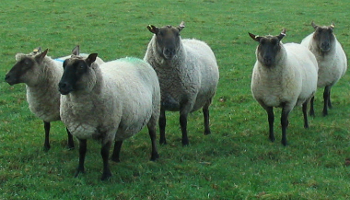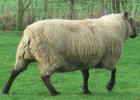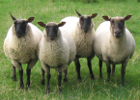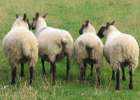
The breed originated in 1964 at Cambridge University. Finnish Landrace rams were mated with 50 ewes from native breeds such as Clun Forest, Llanwenog, Lleyn and Kerry Hill and also some Suffolk × Welsh Halfbreds. The ewes were selected on the basis of having produced at least three sets of triplets.
The resulting crossbred male offspring were backcrossed on to the original native breed ewes and were also mated with their female contemporaries. The selective breeding programme that followed was centred on selection for prolificacy and included a rapid turnover of generations and the division of the population into seven families to prevent inbreeding. Consistently high prolificacy was achieved in successive generations and the population was recognised as a breed in 1979.
During the following 30 years, farmer breeders became involved and now run the Society.
The many generations of selective breeding to maintain/reduce prolificacy and improve milk production and growth and carcass traits has resulted in a breed that has the following characteristics:
- Dark faced
- Medium size; mature rams and ewes weigh 100 kg and 65 kg respectively.
- Hardy, resilient and long-lived animals with excellent teeth. The working life of both rams and ewes averages more than six seasons. Rams are known for their high libido.
- Litter size of mature ewes is 2.3 and shearling ewes and ewe lambs achieve 80% and 60% of this figure, respectively.
- Ewes produce sufficient colostrum to meet the needs of triplet litters and enough milk to rear them successfully. Colostrum production in the first 12 hours has been recorded as 1 to 1.5 litres and estimated milk yields of ewes rearing triplets peaks at 4.5 litres.
- Ewes lamb easily and are good mothers. The incidence of mastitis is low.
- Cambridge sheep are noted for their length, a characteristic that may explain lambs always being heavier than they appear.
- Surplus ram lambs are usually slaughtered at 43 to 47 kg live weight. Care is taken to select rams for breeding to ensure that their offspring have very good loin development and a R3L or better carcass grade.
- Fleeces are short and tight with a wool yield of 2 to 3 kg.




